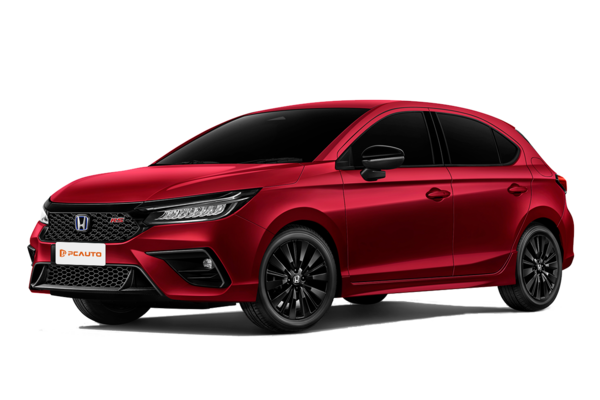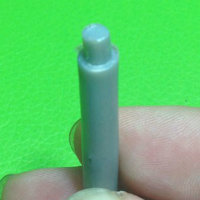Q
what is saloon car
Saloon cars are a common sight on Malaysian roads. These are the traditional four-door, three-box designs – you know, with a separate engine bay, passenger compartment, and trunk. They’ve got those smooth, distinct lines, and that classic shape is still super popular here. Think models like the Proton Saga or Perodua Bezza – total saloon staples.
What makes them tick? Well, space is a big plus. The boot’s roomy, so they’re perfect for family trips or long drives up north. The body structure also tends to feel more stable at highway speeds, which works a treat for those stretches on the North-South Expressway.
Now, how do they stack up against hatchbacks? Usually, saloons have better sound insulation – quieter cabins on the move. But the trade-off? They can have a slightly larger turning circle, so maybe not as nimble when squeezing through tight city streets.
But hey, modern saloons aren’t stuck in the past. They’re packing more tech these days – smart driver assists, efficient engines, that sort of thing. Even hybrid versions like the Toyota Camry Hybrid are gaining traction here.
So, should you go saloon? It really depends on what you need. If you’re hauling gear regularly or ferrying passengers, the saloon’s practicality beats a hatchback. But if you’re mostly zipping around the city, a smaller hatch might be easier to park and maneuver. Your call!
Special Disclaimer: This content is published by users and does not represent the views or position of PCauto.
Popular Models
Related Q&A
Q
Is rpm the same as horsepower?
RPM (Revolutions Per Minute) and horsepower are not the same concept. RPM refers to the number of rotations an engine makes per minute and is a unit for measuring engine speed; horsepower (HP), on the other hand, is a unit of power for measuring an engine's work capacity. The two are closely related. The calculation of horsepower requires combining torque and RPM, for example, using the formula: horsepower = torque × RPM ÷ 5252 (imperial conversion) or ÷ 9549 (metric conversion). Higher RPM generally enables an engine to produce more horsepower, but the actual output also depends on parameters such as torque, and the engine's horsepower performance varies across different RPM ranges.
Q
What is the rpm of a 0.5 hp motor?
The rotation speed of a 0.5 hp motor is not a fixed value; it depends on the motor type, number of pole pairs, and application scenario. In AC asynchronous motors commonly used in Malaysia, the rotation speed is closely related to the power supply frequency and the number of pole pairs. Malaysia's power supply frequency is 50 Hz, and the synchronous speed is calculated by the formula n = 60f/p (where f is the frequency and p is the number of pole pairs). For example, the synchronous speed of a 2-pole asynchronous motor is 3000 rpm, and the actual operating speed is slightly lower due to the slip, approximately 2800-2900 rpm; the synchronous speed of a 4-pole motor is 1500 rpm, with an actual speed of about 1400-1450 rpm; and a 6-pole motor has a synchronous speed of 1000 rpm, with an actual speed of around 950-980 rpm. In the Malaysian market, 0.5 hp motors are widely used in small household water pumps, fans, or small industrial equipment. Different brands (including local brands and models sold in Malaysia by international brands) offer products with different numbers of pole pairs according to requirements. Users need to choose based on the application: for high-speed requirements (such as some ventilation fans), 2-pole motors can be selected; for medium-speed and high-torque requirements (such as small water supply pumps), 4-pole motors are suitable; and for low-speed and high-torque scenarios, 6-pole motors can be chosen. When purchasing, users can confirm whether the rated speed marked on the motor nameplate matches the specific usage requirements.
Q
How to calculate rpm of motor?
The calculation method of motor speed varies depending on the type of motor. For synchronous motors, their speed is directly related to the power supply frequency and the number of pole pairs, with the calculation formula being n = (60×f)/p, where n represents the speed (in rpm, i.e., revolutions per minute), f is the power supply frequency (in Hz), and p is the number of pole pairs of the motor (the number of pole pairs is equal to the number of poles divided by 2). The actual speed of an asynchronous motor is lower than the synchronous speed, so the slip ratio needs to be introduced for calculation, with the formula n = (60×f/p)×(1 - s), where s is the slip ratio (usually expressed as a decimal, generally between 0.01 and 0.05 at full load). The speed calculation formula for a DC motor is n = (U - Iₐ×Rₐ)/(Cₑ×Φ), where U is the armature voltage, Iₐ is the armature current, Rₐ is the armature circuit resistance, Cₑ is the motor constant, and Φ is the flux per pole. For example, if the power supply frequency is 50 Hz and the number of pole pairs is 2, the speed of the synchronous motor is 60×50÷2 = 1500 rpm; if it is an asynchronous motor with a slip ratio of 0.03, the actual speed is 1500×(1 - 0.03) = 1455 rpm. Mastering these calculation formulas helps to understand the working principle of motors, evaluate their performance and energy consumption, thereby selecting and applying motors more reasonably.
Q
Is RPM related to HP?
RPM (revolutions per minute) and HP (horsepower) are directly linked because horsepower is calculated using torque and engine speed. The formula is HP = (Torque × RPM) ÷ 5252, meaning at the same torque level, higher RPM results in greater horsepower.
Engine performance curves typically show how horsepower and torque change across the RPM range. Naturally aspirated engines usually hit peak horsepower at higher RPMs, while turbocharged engines often deliver max horsepower at lower RPMs—thanks to forced induction improving low-end torque.
Understanding this helps when choosing or modifying a car. If you enjoy high-revving driving, a naturally aspirated engine might be your pick. But if you prioritize low-RPM grunt for daily driving, turbocharged models are better suited.
Also, transmission gear ratios play a role in how well the engine stays in its optimal RPM range, balancing power delivery and fuel efficiency. Getting the ratios right means better throttle response and mileage.
Q
What is the RPM of 10 hp?
The RPM range of a 10-horsepower engine depends on its type and application. For instance, a single-cylinder diesel engine in small generators or farm equipment might run between 1,800 and 3,600 RPM, while a high-revving motorcycle engine could exceed 8,000 RPM.
The relationship between power and RPM is determined by torque, calculated as: **Horsepower = Torque (Nm) × RPM ÷ 5,252**. This means a low-RPM engine needs higher torque to achieve the same power output, whereas a high-RPM engine produces less torque.
In everyday cars, idle speeds typically sit at 700–900 RPM, with full-throttle operation reaching over 6,000 RPM—though those engines are far more powerful than 10 hp. For small equipment, RPM selection balances efficiency and durability. Pumps or lawnmowers often use fixed-speed designs for better fuel economy, while construction gear may adjust RPM to match load demands.
For exact specs, always check the engine’s nameplate or manual—factors like air/liquid cooling or two-/four-stroke design significantly impact performance.
Q
What is the maximum hp of a car?
The current production car horsepower record is held by elite hypercar brands. Take the Bugatti Chiron Super Sport 300+ – its monstrous 8.0-liter W16 quad-turbo engine churns out 1,600 horsepower. Then there's the Koenigsegg Jesko Absolut, whose 5.0-liter V8 twin-turbo pushes 1,623 ponies when running on E85 biofuel. These extreme machines use every trick in the book: featherlight carbon fiber bodies, cutting-edge aerodynamics, and multi-turbo systems to chase those insane numbers.
But let's be real – horsepower isn't everything. Torque, drivetrain efficiency, weight, and chassis tuning matter just as much. For daily driving? A modest 200-300 hp in your average family sedan is plenty. Even performance cars in the 400-600 hp range will satisfy most speed cravings.
What's interesting is how hybrid tech is changing the game. Many modern performance cars now use electric motors to boost power while keeping efficiency somewhat reasonable. My advice? Match the horsepower to your actual needs – no point paying at the pump for power you'll never use.
Q
Can a car have 800 horsepower?
Sure thing. Right now, there are quite a few high-performance cars on the market pushing 800 horsepower or even more. These beasts usually fall into the supercar or heavily modified performance car category—think flagship models from top-tier brands or professionally tuned builds. They achieve that insane power through massive engines, turbocharging, or hybrid systems.
An 800-horsepower car is brutally quick, often hitting 0-100 km/h in under 3 seconds, but it also demands serious skill to handle, not to mention upgraded cooling and braking systems. Keep in mind, though, that this much power isn’t exactly practical for daily driving—it’s more at home on a track or special occasions. Local factors like fuel quality, road conditions, and legal restrictions also come into play.
If you’re into high-performance machines, follow expert auto media or test-drive events to experience them firsthand. Just remember to pick a car that actually suits your needs—not just the numbers on paper.
Q
What should my RPM be at 100?
When you're cruising at 100 km/h, your engine's RPM depends on several factors like transmission type, engine displacement, and gear ratios.
With a manual transmission in top gear (usually 5th or 6th), you might see the tachometer sitting between 2,500 and 3,500 RPM. Automatic transmissions, on the other hand, tend to keep revs lower—around 2,000 to 3,000 RPM—thanks to their adaptive tuning for better fuel efficiency.
Smaller turbocharged engines may run slightly higher RPMs, while larger naturally aspirated engines often maintain lower revs at the same speed. Other variables like vehicle load, road incline, and driving mode (sport vs. eco) also play a role.
Keeping RPMs in the right range during highway driving not only saves fuel but also reduces engine wear. If you notice unusually high or low revs at speed, it’s worth checking transmission fluid, clutch health, or sensors to avoid long-term issues.
Q
What vehicle has the highest horsepower?
The most powerful production car in the world right now is the Bugatti Chiron Super Sport 300+. Its monstrous 8.0-liter quad-turbo W16 engine churns out an insane 1,600 horsepower, with a top speed of 490 km/h - absolute peak internal combustion engineering.
That said, electric hypercars are starting to push boundaries too. Take the Rimac Nevera: 1,914 hp from its four-motor setup proves EVs have serious performance potential.
For us car enthusiasts, horsepower is just one piece of the puzzle. Things like torque delivery, transmission tuning, weight distribution, and aero make all the difference in real-world driving. Some high-performance SUVs might not match supercars on paper, but clever AWD systems and well-sorted suspension can deliver just as much excitement.
Truth be told, excessive power means little in daily driving. Reliability, fuel efficiency, and safety tech matter far more to most buyers. At the end of the day, a well-balanced package always wins.
Q
How to convert RPM into power?
Converting RPM (revolutions per minute) to power (usually measured in horsepower or kilowatts) requires factoring in engine torque, because power is calculated as: Power (kW) = Torque (Nm) × RPM ÷ 9549, or Power (HP) = Torque (lb-ft) × RPM ÷ 5252. Simply put, the torque an engine produces at a given RPM determines its power output—so you can’t translate RPM into power without torque data.
Different engines have distinct torque curves. A turbocharged motor, for example, might deliver peak torque at lower RPMs, while a naturally aspirated engine often needs higher revs to hit its max power. Real-world performance also depends on transmission and drivetrain efficiency, which is why two cars with the same horsepower can feel totally different on the road.
For a deeper dive, check out an engine’s powerband curve—it maps how torque and power relate to RPM, showing where the engine performs best. That’s the key to understanding what really happens under the hood.
Popular Cars
Model Year
Car Compare
Car Photo
Latest Q&A
Q
How powerful is 2 horsepower?
2 horsepower converts to approximately 1491.4 watts (or 1.4914 kilowatts) in the International System of Units. From a practical experience perspective, 1 horsepower is equivalent to the power output required to carry a 10-kilogram load and run 100 meters in 13 seconds. Therefore, the intensity of 2 horsepower is about twice that level—for example, it can carry a 20-kilogram load to complete 100 meters in 13 seconds, or carry a 10-kilogram load to finish the distance in a shorter time. In daily application scenarios, 2 horsepower falls into a relatively small power range, far lower than the typical 100-200 horsepower output of a family car engine. It is commonly found in small mechanical equipment such as some garden pruning tools, small water pumps, or lightweight agricultural auxiliary machinery, which need to continuously output small power to complete specific tasks. It should be noted that there are distinctions between imperial horsepower and metric horsepower, but the imperial horsepower conversion standard is usually adopted by default in daily use.
Q
What is the lifespan of a 2HP motor?
The lifespan of a 2HP motor is influenced by multiple factors such as usage frequency, maintenance practices, operating environment, and motor type. When used correctly under rated conditions and maintained regularly, its average lifespan typically ranges from 10 to 15 years. However, if it operates for a long time in high-temperature, humid, or dusty environments, or runs under frequent overload, its lifespan may be shortened to 5 to 8 years. In practical application scenarios in Malaysia, such as small pumps for automotive auxiliary systems or small industrial drive motors (if they are of 2HP specification), choosing high-quality brand products and following standardized maintenance procedures (such as regular cleaning, checking lubrication, and electrical connections) can effectively extend the service life. Additionally, the manufacturing process and material quality of the motor also affect its lifespan, and products from reputable brands usually have better durability guarantees. It should be noted that timely replacement of worn parts and avoiding long-term continuous overload operation are key measures to maintain the motor in good condition.
Q
How fast does 2 hp go?
The speed corresponding to 2 horsepower varies depending on the vehicle type and design. Taking electric two-wheelers as an example, 1 horsepower is approximately equal to 0.7457 kilowatts. Referring to relevant model data, an electric two-wheeler equipped with a motor of about 2 kilowatts (approximately 2.68 horsepower) can reach a maximum speed of 62 km/h. Therefore, a vehicle with 2 horsepower has a speed roughly ranging from 55 to 60 km/h.
Such vehicles are typically suitable for short-distance urban commuting scenarios. Some models also feature two riding modes: economy and sport. The full-charge range can reach 105 km, and charging from 0 to 80% takes approximately 6 hours. They also come with a 2-year or 20,000-kilometer warranty. Some models may qualify for subsidies under local policies, further improving commuting cost-effectiveness. The design of these vehicles meets urban transportation needs while balancing practicality and convenience.
Q
How many kW are in 2HP?
The result of converting 2HP to kilowatts (kW) varies slightly depending on the type of horsepower: if it is British mechanical horsepower (commonly used in automotive and other fields), 2HP is approximately equal to 1.49kW (accurate value is approximately 1.4914 kW); If it is metric horsepower (also known as horsepower), 2HP is approximately equal to 1.47kW (accurate value is approximately 1.471kW). In practical applications, such as engine power labeling or motor parameters, approximate values are sometimes used to simplify 2HP to 1.5kW for quick reference. Horsepower (HP) and kilowatts (kW) are both units of power. The former originated from measuring mechanical power (such as steam engines and horse pulling force), while the latter is an internationally recognized unit of power standard. The conversion relationship between the two needs to be determined according to specific definitions, and the choice in different scenarios will affect the final conversion result.
Q
What is the power of a 2 hp motor?
The power of a 2 hp motor can be derived through the conversion between horsepower and the international standard unit of power. HP, or horsepower, has two common standards: imperial and metric. 1 imperial HP is approximately equal to 745.7 watts, while 1 metric HP is about 735 watts. When converted using the metric standard, the power of a 2 hp motor is 2 × 735 = 1470 watts (i.e., 1.47 kilowatts); when using the imperial standard, it is approximately 2 × 745.7 ≈ 1491.4 watts (around 1.49 kilowatts). In practical applications, different standards may be adopted in different scenarios, but a common approximation in the industry is that 2 hp is roughly equal to 1.5 kilowatts. Horsepower is a traditional unit of power, often used to describe the output capacity of equipment such as motors and engines. However, in the International System of Units, watts or kilowatts are more recommended as units of power. Therefore, in formal technical documents, horsepower values are usually converted to watts or kilowatts for labeling to ensure the uniformity and accuracy of technical communication. Mastering such unit conversion relationships helps to accurately understand the power output capacity of motors in scenarios such as equipment selection and performance evaluation.
View MoreLatest News

Wuling Bingo EV 2025 model launched in Malaysia, adding a strong contender to the entry-level pure electric market
AshleyDec 25, 2025

Tax exemption policy is coming to an end, Malaysia's electric vehicle registrations in November increased by 25% month-on-month to 5,417 units
Kevin WongDec 25, 2025

For safety reasons, the Chinese government may ban fully concealed door handle designs
MichaelDec 24, 2025

"Consumer Reports" Used Car Reliability Rankings Released: Lexus and Toyota Perform Steadily, Continue to Lead
AshleyDec 24, 2025

Zeekr's First Anniversary in Malaysia: Over 2,000 Deliveries, High-Performance Car 7X Becomes a Highlight
Kevin WongDec 24, 2025
View More




 Cars
Cars















